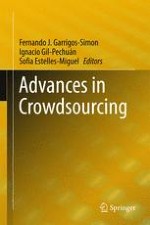
2015 | OriginalPaper | Buchkapitel
1. From Crowdsourcing to the Use of Masscapital. The Common Perspective of the Success of Apple, Facebook, Google, Lego, TripAdvisor, and Zara
verfasst von : Fernando J. Garrigos-Simon, Yeamduan Narangajavana
Erschienen in: Advances in Crowdsourcing
Aktivieren Sie unsere intelligente Suche, um passende Fachinhalte oder Patente zu finden.
Wählen Sie Textabschnitte aus um mit Künstlicher Intelligenz passenden Patente zu finden. powered by
Markieren Sie Textabschnitte, um KI-gestützt weitere passende Inhalte zu finden. powered by